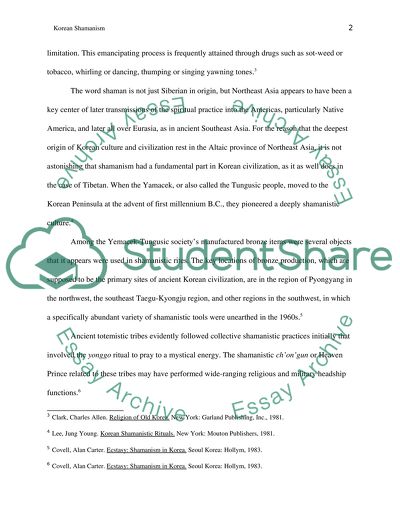Cite this document
(“Korean shamanism Research Paper Example | Topics and Well Written Essays - 2500 words”, n.d.)
Korean shamanism Research Paper Example | Topics and Well Written Essays - 2500 words. Retrieved from https://studentshare.org/miscellaneous/1553728-korean-shamanism
Korean shamanism Research Paper Example | Topics and Well Written Essays - 2500 words. Retrieved from https://studentshare.org/miscellaneous/1553728-korean-shamanism
(Korean Shamanism Research Paper Example | Topics and Well Written Essays - 2500 Words)
Korean Shamanism Research Paper Example | Topics and Well Written Essays - 2500 Words. https://studentshare.org/miscellaneous/1553728-korean-shamanism.
Korean Shamanism Research Paper Example | Topics and Well Written Essays - 2500 Words. https://studentshare.org/miscellaneous/1553728-korean-shamanism.
“Korean Shamanism Research Paper Example | Topics and Well Written Essays - 2500 Words”, n.d. https://studentshare.org/miscellaneous/1553728-korean-shamanism.


